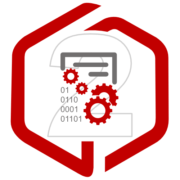Using a Shared Connection with HSGetValue/HSSetValue with Planning or PBCS
If you are a fan of the HSGetValue and HSSetValue, you probably are using a private connection. As you know, anybody that uses the template has to either change the connection string to their own predefined private connection, or set up a private connection with the same name. When dealing with inexperience users, both methods can be problematic.
You may be surprised to know that the Get and Set Value functions can use a shared connection. Rather than using the private connection name, the following can be specified to use a shared connection in place of the private connection name.
Private connection syntax:
HsGetValue(“PrivateConnectionName”,”POV”)
HsSetValue (dollar amount,”PrivateConnectionName”,”POV”)
Shared connection syntax:
HsGetValue(“WSFN|ProviderType|Server|Application|Database”,”POV”)
HsSetValue (dollar amount,”WSFN|ProviderType|Server|Application|Database”,”POV”)
Parameter Summary
- “WSFN” is a static string and never changes
- The provider type for planning is “HP” regardless of whether the server is a cloud server or on premise server
- The server specifies the location of the server housing the application. For PBCS, use the URL provided by Oracle (planning-test-domain.pbcs.us2.oraclecloud.com)
- The application is the application name
- The database is the plan type, or database name
Put that all together and the string looks like this.
WSFN|HP|planning-test-A12345.pbcs.us2.oraclecloud.com|Finance|Revenue
Conclusion
Although there are a few drawbacks to using a shared connection (users could use the wrong connection and not get the expected result), my experience has been that the pros (no setup of private connections, can be used in multiple environments without changing anything, etc.) far outweigh the cons.








Hi Kyle,
Did you try with member name having “#” in alias ? We are having issue with the same